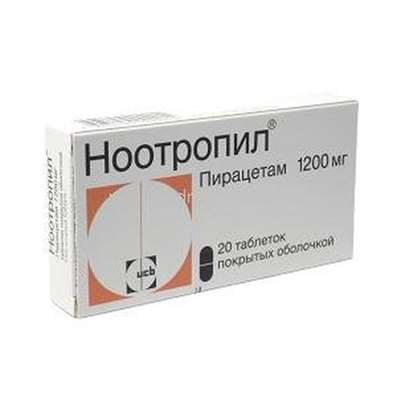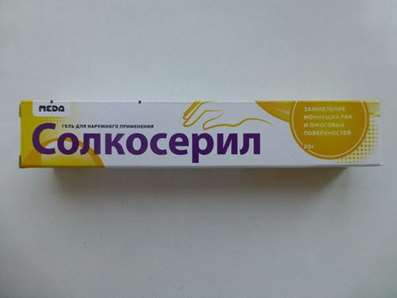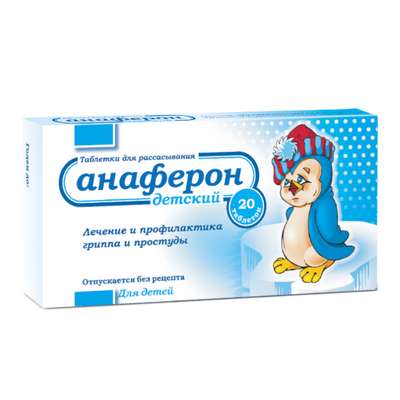Instruction for use: Dolobene
I want this, give me price
Dosage form: Gel for external use
Active substance: Heparinum natrium + Dexpanthenolum + Dimethylsulfoxydum
ATC
C05BA53 Heparin in combination with other drugs
Pharmacological group
Anticoagulant direct action for topical use + other drugs [Anticoagulants in combination]
The nosological classification (ICD-10)
M53.1 Cervico-shoulder syndrome: Acute shoulder-scapular periarthritis; Shoulder-shoulder periarthritis; Shoulder-scapular periarthritis; Shoulder periarthritis; Pleiraptocular periarthritis; Periarthritis in the humeroscapular region; Shoulder Syndrome
M60.9 Unspecified Myositis: Neuromyositis; Extubulbar myositis
M65 Synovitis and tendosynovitis: Acute tenosynovitis; Tendovaginitis (tenovaginitis); Tendosinovit (tenosynovitis); Tendovaginitis; Osteoarthritis in musculo-articular diseases; Inflammatory disease of soft tissues; Nonspecific tenosynovitis; Tenosynovit; Tendosinovit
M65.9 Synovitis and tendosynovitis, unspecified: Synovitis; Inflammation of the tendon sheath; Acute nonspecific tenosynovitis; Reactive synovitis
M67 Other disorders of synovial membranes and tendons
M67.9 Synovial and tendon disorders, unspecified: Inflammation of tendons; Inflammation of ligaments; Inflammation of tendons with injuries; Inflammation of tendons
M71 Other bursopathies: Bursitis; Bursopathy; Diseases of soft tissues; Osteoarthritis in musculo-articular diseases; Inflammatory disease of soft tissues; Subacute bursitis
M77.0 Medial epicondylitis: Epicondylitis medial; Epicondylitis; Epicondylitis traumatic medial
M77.1 Lateral epicondylitis: Epicondylitis lateral; Epicondylitis; Epicondylitis traumatic lateral
M77.9 Other specified enterosopathy: Capsules; Periarthritis; Tendonitis; Tendopathy; Periarthropathy
M79.2 Neuralgia and neuritis, unspecified: Pain syndrome with neuralgia; Brachialgia; Occipital and intercostal neuralgia; Neuralgia; Neuralgic pain; Neuralgia of intercostal nerves; Neuralgia of the posterior tibial nerve; Neuritis; Neuritis traumatic; Neurological Pain Syndromes; Neurological contractures with spasms; Acute neuritis; Peripheral neuritis; Post-traumatic neuralgia; Severe pain of a neurogenic nature; Chronic neuritis; Essential neuralgia
R60.0 localised oedema: Allergic edema of the larynx; Local edema; Local edema; Local edema; Edema localized; Edema of the lower limbs; Edema caused by inflammation of the tendon sheaths; Edema after dental interventions; Swelling of the nasopharyngeal mucosa; Edema of the mucous membrane of the nasopharynx; Trauma of traumatic origin; Edema of traumatic nature; Edema with trauma; Post-traumatic swelling; Post-traumatic edema; Post-traumatic swelling of soft tissues; Traumatic edema; Edema of the oral cavity
T14.0 Superficial injury of unspecified area of the body: Abrasions; Scratch; Skin Wounds; Wounds of soft tissues; Hematoma; Hematoma of traumatic origin; Hematomas; Hematomas of muscles; Hematomas of soft tissues; Healing of the skin; Bruise; Bruising due to sprains and bruises; Microtrauma; External bruises; Small combing; Superficial hematoma; Superficial damage to the skin and mucous membranes; Subcutaneous hematoma; Post-traumatic hematoma; Post-traumatic disturbance of microcirculation; Skinness of the skin; Traumatic plexus lesions; Injury; Contusion of soft tissues; Joint bruise; Traumatic bruises; Traumatic injury; Primary treatment of surface contaminated wounds; Abrasion; Bruise
T14.3 Dislocation, sprain and damage to the capsular-ligamentous apparatus of the joint of the unspecified area of the body: Painful stretching of the muscles; Pain and inflammation in tension; Dislocation of dislocation; Degenerative changes in the ligamentous apparatus; Edema due to sprains and bruises; Edema after interventions during sprains; Damage and rupture of ligaments; The musculoskeletal system is damaged; Damage to ligaments; Damage to the joints; Ligament ruptures; Tendon tendons; Ruptures of the tendons of muscles; Stretching; Crick; Stretching of the muscle; Sprain; Tension of the tendons; Extensions; Stretch muscles; Sprains; Tension of the tendons; Injury of the musculoskeletal system; Injuries to the joints; Injuries of capsule-articular tissues; Injuries of the osteoarticular system; Injuries to ligaments; Injuries to the joints; Joint wounds; Stretching of the ligamentous apparatus; Stretching of the ligamentous apparatus; Habitual stretching and tearing
T14.9 Injury unspecified: Pain syndrome after trauma; Pain syndrome with injuries; Pain syndrome with injuries and after surgery; Pain in case of injury; Pain of a traumatic nature; Joint pain with injuries; Postoperative and post-traumatic pain; Pain in case of injury; Pain of traumatic origin; Severe pain syndrome of traumatic origin; Deep tissue damage; Deep scratches on the trunk; Closed injury; Minor Household Injuries; Minor skin damage; Violations of the integrity of soft tissues; Uncomplicated trauma; Extensive traumatic injury; Acute pain syndrome of traumatic origin; Edema with trauma; Postponed sports injuries; Post-traumatic pain; Soft tissue injuries; Joint wounds; Sports injuries; Injury; Traumatic pain; Traumatic pains; Traumatic infiltrate; Injuries to sports
Composition
Gel for external use - 100 g
Active substances: Heparin sodium 50000 ME
Dexpanthenol 2.5 g
Dimethylsulfoxide 90% 16.66 g
(In terms of dry matter - 15 g)
Auxiliary substances: polyacrylic acid - 1-1,4 g; Trometamol - 0.2-0.3 g; Macrogol glyceryl hydroxy stearate (Cremophor CO455) - 1 g; Isopropanol 35 g; Rosemary oil - 0.2 g; Pine mountain oil - 0.25 g; Citronella oil - 0.05 g; Purified water - 42,023-42,913
Description of dosage form
From clear to slightly cloudy and from colorless to slightly yellowish color gel.
Pharmachologic effect
Mode of action - Anti-inflammatory, decongestant.
Pharmacodynamics
Dimethylsulfoxide (DMSO)
DMSO has anti-inflammatory, anti-edematous and local anesthetic effect. Anti-inflammatory activity is associated with some pharmacological effects, the most significant of which is the inactivation of hydroxyl radicals, which are produced in large quantities during the inflammation process and have a destructive effect on the tissue.
DMSO has a local analgesic effect by decreasing the rate of nociceptive (painful) impulses in peripheral neurons. Anti-edematous action is provided by inactivation of hydroxyl radicals and improvement of subcutaneous metabolic reaction at the place of application of the drug. To a certain extent, the hygroscopic properties of DMSO are also responsible for its anti-edematous effect.
DMSO (from 50% and more) penetrates through the biological membranes, incl. Through the skin, promoting better and deeper penetration into the tissues of other drugs used simultaneously with it.
Heparin
Heparin has an anti-inflammatory effect, promotes regeneration of connective tissue due to inhibition of hyaluronidase activity.
Heparin exhibits a dose-dependent antithrombotic effect, enhancing the inhibitory activity of antithrombin III with respect to the activation of prothrombin and thrombin.
Penetration of heparin through healthy skin is dose-dependent and is confirmed for dosage starting at 300 IU / g.
Dexpanthenol
With topical application, dexpanthenol is transformed into the skin into pantothenic acid (vitamin B). The efficacy of dexpanthenol is comparable to that of pantothenic acid. Pantothenic acid as a component of coenzyme A participates in various catabolic and anabolic processes in tissues, due to the improvement of granulation and epithelization processes promotes the regeneration of damaged skin areas.
Pharmacokinetics
DMSO
The physiological concentration of DMSO in normal blood plasma is 40 ng / ml. After 6 hours after application of the drug, Cmax in blood plasma reaches 120 ng / ml and remains up to 12 hours after application. After 60 h after application, the DMSO concentration in the blood plasma reaches a physiological level of 40 ng / ml.
12-25% of absorbed DMSO is excreted within the first 24 hours and 37-48% is excreted within 7 days unchanged or as a metabolite (dimethylsulfone) through the kidneys. 3.5-6% of total DMSO is excreted through the lungs in the form of dimethyl sulphide 6-12 hours after application of the drug.
When applied to 1 g of DMSO 3 times a day for 5 days, its average content at the application site on the skin is 3 mg / g, the average content in the underlying muscle tissue and synovial membrane at the site of the synovial compound is 7-10 μg / ml, in the synovial Of the liquid is 0.8 μg / g. The concentration of DMSO in blood plasma is 0.5 μg / g. T1 / 2 DMSO is 11-14 hours.
Heparin
At external application heparin is absorbed slightly.
Dexpanthenol
With external use, dexpanthenol is transformed in the skin into pantothenic acid. Good absorption of dexpanthenol has been confirmed experimentally.
Indications for Dolobene
Edema, hematomas and inflammation of soft tissues, muscles, tendons, tendon sheaths;
Closed injuries, bruises;
Injuries of the joints with sprains and tendons;
Epicondylitis of the shoulder ("elbow tennis player"), tendinitis (inflammation of the tendons), tendovaginitis (inflammation of the tendon sheaths), bursitis (inflammation of the mucous bag of the joint);
Periarthritis of the shoulder joint;
Acute neuralgia.
Contraindications
Hypersensitivity to one of the gel components (active and / or excipients);
bronchial asthma;
Severe violations of the liver, kidneys;
Severe cardiovascular system disorders;
pregnancy;
Lactation period;
Age up to 5 years;
Open wounds at the site of application.
Pregnancy and breast-feeding
Application during pregnancy. Since the research data on the use of the drug in pregnant women are not available, its use during pregnancy is contraindicated.
Application during lactation. DMSO penetrates into breast milk, so during the use of the drug should stop breastfeeding.
Side effects
Local skin reactions (redness, itching burning sensation at the site of application of the gel), which usually disappear during further treatment, are possible.
Due to the content of DMSO or other components of the drug, it is sometimes possible to develop a skin allergic reaction.
In rare cases, during the use of the drug in some patients may smell of garlic from the mouth. The smell is caused by dimethyl sulfide, which is a product of DMSO metabolism.
Perhaps a change in taste, disappearing a few minutes after applying the gel.
In rare cases, the occurrence of allergic reactions of an immediate type (urticaria, Quincke's edema).
It is extremely rare when applying the drug to large areas of the body may cause nausea, diarrhea, difficulty breathing, headache, chills.
Dosing and Administration
Topical.
Dolobien should be applied on the skin over the affected area of the skin 2-4 times a day.
When using the gel under the bandage, apply the drug and wait a few minutes for it to be absorbed by the skin and evaporate the isopropanol. Then you can apply a hermetically sealed bandage.
Dolobene can be used for iontophoresis. The drug is applied to the cathode.
Dolobene as a contact gel can be used in ultrasound therapy (phonophoresis). The active substances of the gel complement the therapeutic effect of ultrasonic waves.
The duration of treatment depends on the severity of the symptoms and the severity of the disease.
Overdose
Data on drug overdose are absent.
Special instructions
Place the application of the gel should be free from other drugs, cosmetics or any chemical agents. Doloben cannot be applied to the mucous membranes of the eyes, nose, mouth, open wounds or to damaged areas of the skin (due to irradiation, severe sunburn), post-operative scars.
During the treatment, the photosensitivity of the skin can be intensified, therefore, during the period of its application, intensive sunbathing and visiting the solarium should be limited. In case of skin reactions, treatment should be discontinued. Due to the high absorption of DMSO, do not use Dolobene in combination with other ointments and gels.
Release Form
Gel for external use. For 50 g of the drug in aluminum tubes, tightened with aluminum foil to control the first opening, with screwed polymer caps. One tube is placed in a cardboard box.
Manufacturer
"Merkle GmbH", Ludwig-Merklessstrasse, 3, D-89143, Blaubeuren, Germany.
The organization authorized to accept claims from consumers: OOO Ratiofarm RUS. 105064, Moscow.
Conditions of supply of pharmacies
Without recipe.
Storage conditions of the drug Dolobene
The temperature is not above 25 ° C.
Keep out of the reach of children.
The shelf life of the drug Dolobene
3 years.
Do not use beyond the expiration date printed on the package.

 Cart
Cart





